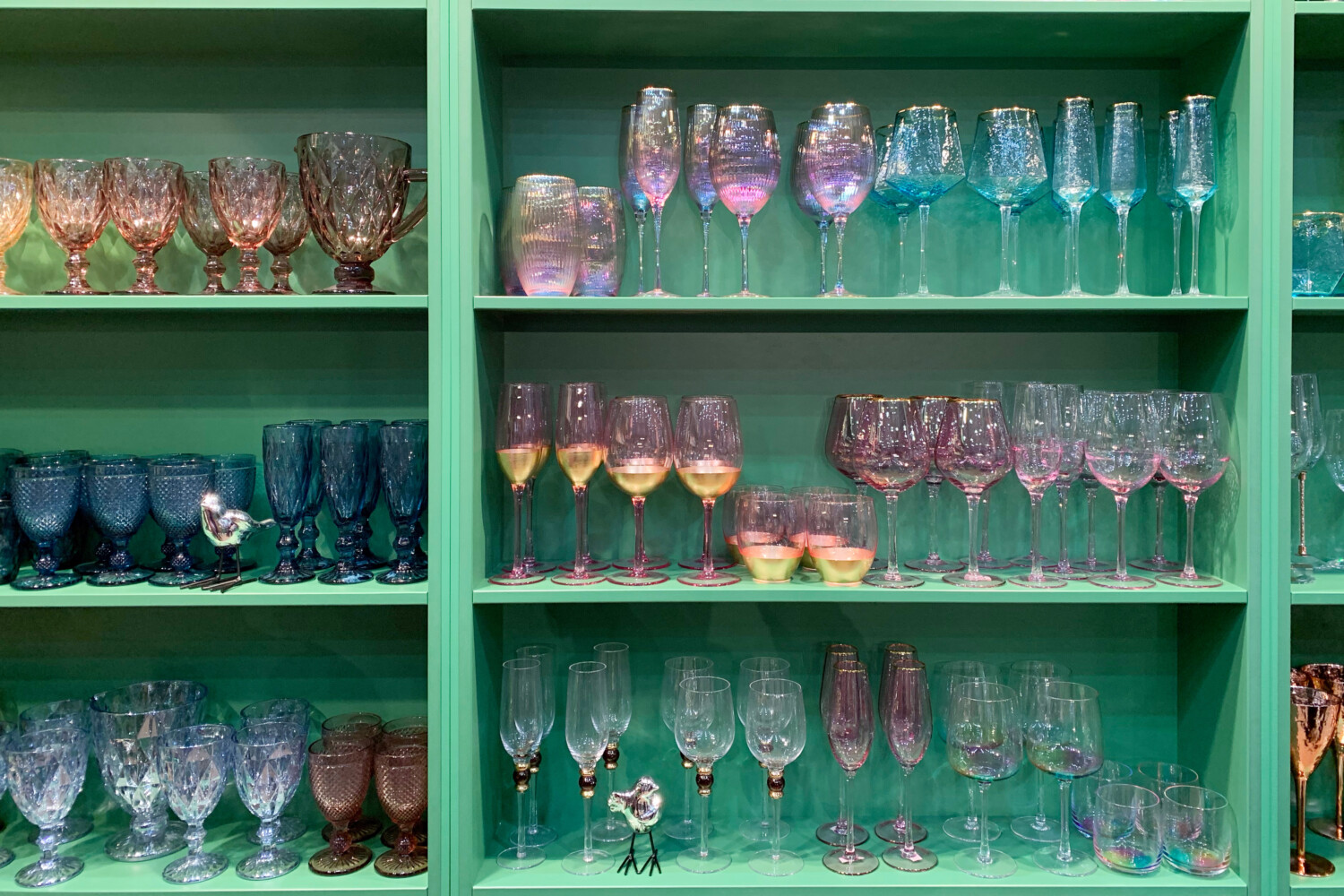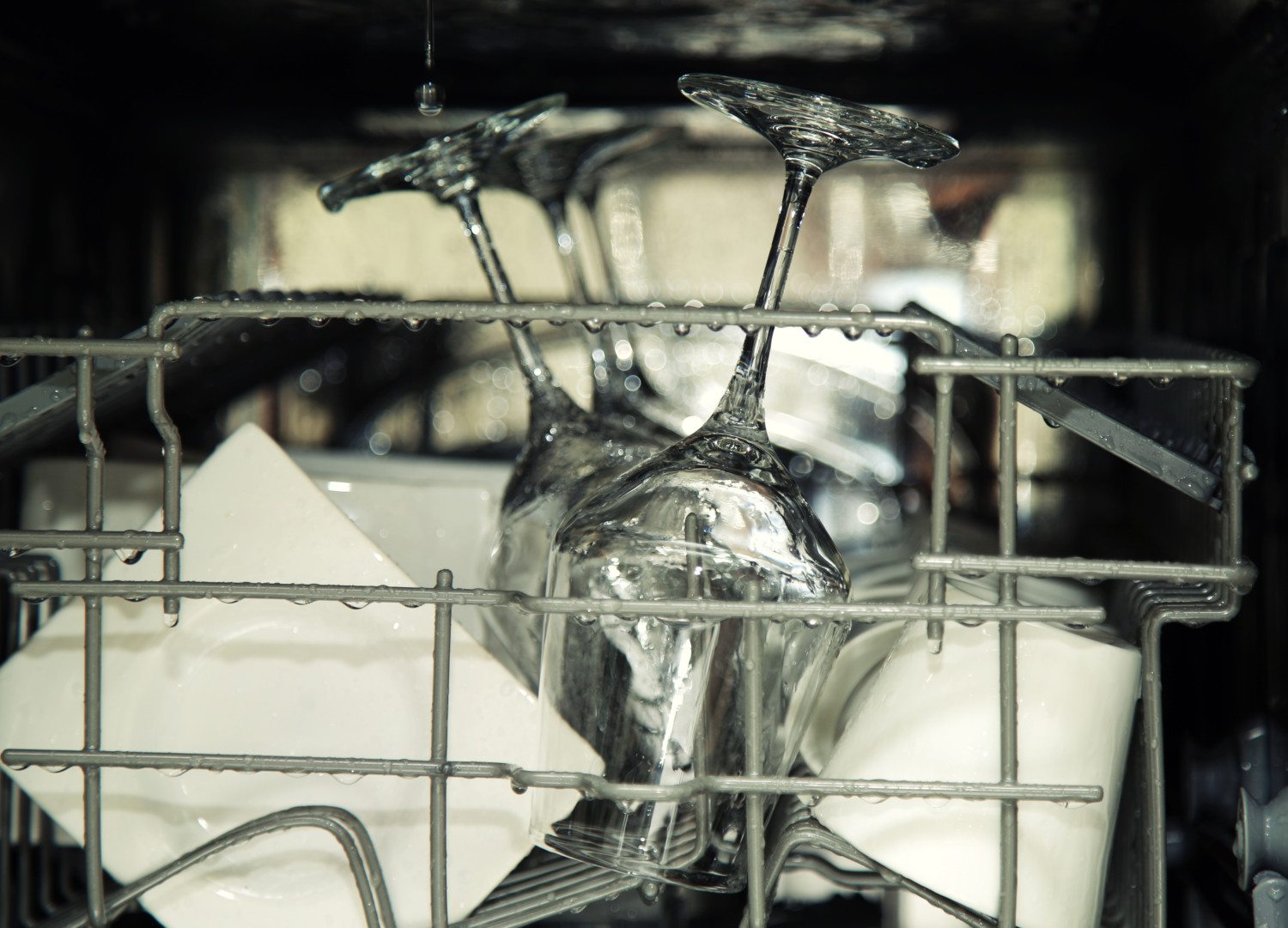Have you ever helped a friend or family member unload their dishwasher only to notice they store their glasses differently than you? Often, habits like this stem from how we were brought up and what our parents did.
Which way do you store your drinking glasses — right-side up or upside down? And which way is the “right” way to do it?
The debate revolves around choosing the lesser of two evils. Upside-down cups mean rims could potentially come into contact with germs when they touch the shelf; however, right-side-up vessels can collect dust.
Apparently, people are split: Martha Stewart did a poll of 10,020 people on social media and found that 5,315 said they put their glasses rim-side-up, while, 4,705 said they stored them rim-side-down.

What Is The Right Way To Store Glassware?
In fact, the best way to store glassware really depends on your kitchen cabinetry and the conditions in your home, along with your personal preference. For example, if you have an old or dusty home or contend with pests regularly, you may want to make sure your glasses are protected with their tops down. The same goes for when you have open shelving that’s exposed to the air.
Some experts advocate for keeping glasses rim side down, pointing out that this will prevent dust from settling inside the cup no matter where it’s stored.
Just be sure your vessels are dry before storing them. If they’re still slightly wet when you put them away, you could potentially trap liquid in them — and trust us, no one wants to drink out of a mildewy-smelling glass.
However, storing glasses right side up has its advantages as well. For one thing, it’s more convenient to take them in and out of a cupboard without having to switch their position to fill them. You also keep their rims off potentially dirty shelf surfaces.
As long as you have closable cabinets with doors, your glassware will be less likely to collect matter that’s floating around in the air even if it’s right-side up. Besides, most people use a dishwasher or thoroughly hand-wash their glassware. This makes the differences between the two methods pretty negligible.

What’s The Safest Way To Store Delicate Glassware?
The rim is often the most delicate area for champagne flutes, wine glasses and tea cups, making it prone to chipping.
Storing this type of stemware so it rests on its base means the rim will be less likely to nick the cabinet base when being put away. Also, if a glass already contains a tiny chip, putting it upside down may make the crack larger because of the weight being put on the damaged area.
However, if you’re pro upside down at all costs, that’s fair. Since wine glasses and other fragile items may not be used as often as other glassware, they do tend to collect more dust. For you, all hope is not lost.
Consider investing in padded liners for under your most fragile stemware to help prevent accidents and regularly wipe shelves down to keep things clean. Make sure glasses have enough space that they aren’t touching each other and make sure they are totally dry. You may also wish to keep glasses in their original packaging for extra safety.
You can also hang sturdy (not delicate!) stemware upside down in certain wine racks to keep them dust-free without putting pressure on the rims. This saves space, helps glasses dry faster and provides easy access.

The Bottom Line
Do what works best for your kitchen setup and your glassware style. If you’re drinking from durable glasses most of the day and have kitchen cabinets with doors, it probably doesn’t matter. You may even be able to stack sturdier glassware if you are tight on cabinet space.
However, if you’ve got a collection of high-end, thin wine glasses, they’ll be best stored right-side up inside a cabinet or upside down hung from a rack.
Regardless of whether you’re a glass up or down kind of person, we can probably all agree that the best place to store go-to glassware is in a cabinet near the sink or dishwasher. Keeping everything within arm’s reach makes accessing them and putting them away so much easier!
This story originally appeared on Simplemost. Check out Simplemost for additional stories.


